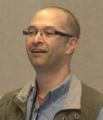SUSTAINABLE STREAM RESTORATION: Parksville 2019 Symposium organizing committee releases the Detailed Agenda for Day One (April 3) – “Getting It Right by Applying the Whole-System Approach”

“Reconnect hydrology and ecology – what happens on the land in the creekshed matters to streams! That is the over-arching message for Day One of the symposium,’ states Paul Chapman of the Parksville 2019 Organizing Committee. “In opening the symposium, I will be reporting out on one of the substantial outcomes of the Nanaimo 2018 Symposium. Galvanized by what they learned, a diverse group of stewardship groups formed a ‘creekshed coalition’, united by water, before leaving the symposium.”








